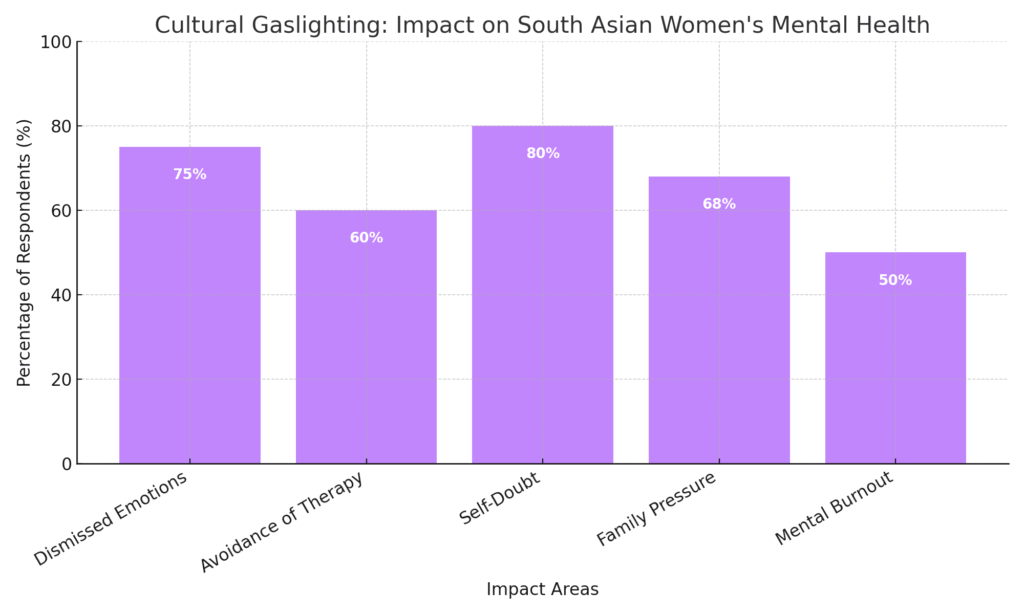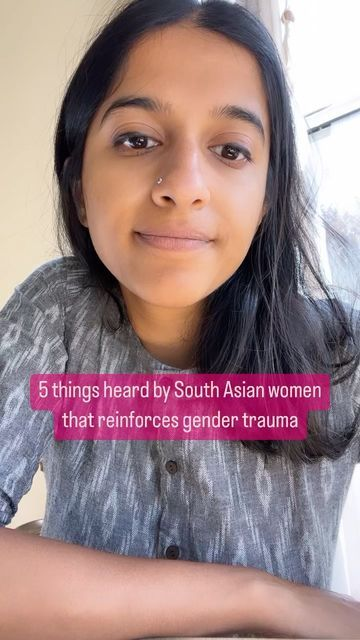
Introduction: When Your Truth Is Too Loud for Their Comfort
Priya, 26, told her mother she was struggling with anxiety.
The response?
“Stop watching too much YouTube. You’re just overthinking. Nothing’s wrong.”
It wasn’t the first time her feelings were dismissed.
And it wouldn’t be the last.
For many South Asian daughters, pain is not something to be addressed — it’s something to be silenced.
When you speak up, you’re told you’re “dramatic,” “ungrateful,” or “too emotional.”
That’s not parenting.
That’s cultural gaslighting.
What Is Cultural Gaslighting?

Gaslighting is when someone manipulates you into doubting your reality.
Cultural gaslighting is when entire belief systems are used to deny your emotional truth.
In South Asian households, this often sounds like:
- “We gave you everything — how can you be depressed?”
- “Back in my day, we didn’t have time to cry.”
- “Don’t shame the family by talking about these things.”
These phrases don’t just sting — they unravel your sense of self.
Real Voices: “I Started Believing I Was the Problem”

Nilofer, 29:
“I tried opening up about childhood trauma. My uncle laughed and said, ‘That’s just how we were raised. Get over it.’ I felt like I was crazy for feeling hurt.”
Ayesha, 24:
“I was told that my panic attacks were just ‘hormones’ and that I needed to fast more. It made me stop trusting my body.”
Farah, 33:
“Even in therapy, I second-guessed myself. Because for so long, I was trained to believe I was exaggerating.”
This is what cultural gaslighting does — it replaces your truth with their denial.
Why It’s So Damaging
🧠 Cultural Gaslighting Journal Prompts Table
| Prompt | Your Reflection (Write Below) |
|---|---|
| 1. Reclaiming Reality Describe a time your feelings were dismissed. What did you feel? | <br><br> |
| 2. Naming the Gaslight List phrases that made you doubt your emotions. | <br><br> |
| 3. Emotional Truth “What I wish someone had said to me instead was…” | <br><br> |
| 4. Intergenerational Reflection What emotions were your elders not allowed to express? | <br><br> |
| 5. Self-Validation Write a letter to your younger self affirming their emotions. | <br><br> |
| 6. Moving Forward What emotional boundaries or practices will you set from now on? | <br><br> |
When pain is dismissed, it doesn’t disappear — it goes underground.
And there, it festers into:
- Low self-esteem
- Shame and guilt for speaking up
- Fear of being perceived as “too much”
- Difficulty trusting your own emotions
Stat:
A 2022 MannMukti survey found that 67% of South Asian women felt their families had dismissed or minimized their emotional struggles.
Gaslighting is not just emotional neglect — it’s a form of invisible abuse.
Why It Happens: The Generational Echo
Our parents and elders didn’t have language for mental health.
They were taught:
- Survival = silence
- Strength = endurance
- Respect = obedience
So when we come with our tears, truths, or therapy, it rattles the very foundation they built their lives on.
But breaking that cycle isn’t betrayal.
It’s healing.
Reclaiming Your Truth: The Path to Emotional Liberation
Here’s how South Asian women are starting to un-gaslight themselves:
- Naming what happened — even if your family won’t acknowledge it
- Validating your emotions through journaling, therapy, or community
- Setting emotional boundaries, even if they’re misunderstood
- Unlearning the shame tied to being sensitive or expressive
As Brown Girl Therapy founder Sahaj Kohli says:
“You are not too much. They were too uncomfortable to hold your truth — that’s not your burden to carry.”
Final Thoughts: You Are Not the Drama
If you’ve been told your emotions are inconvenient…
If your trauma has been minimized as exaggeration…
If you’ve learned to say “I’m fine” when you’re not…
Let this be your reminder:
You are not dramatic. You are not weak. You are not imagining it.
You are feeling.
You are surviving.
You are finally telling the truth.
And that’s the bravest thing of all.
No Responses